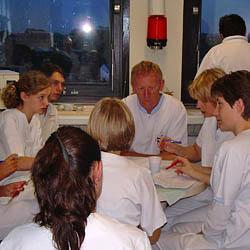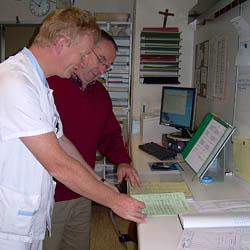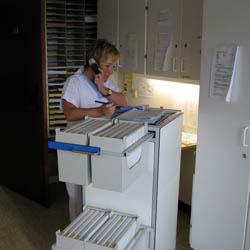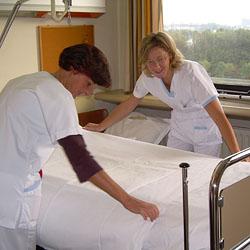After the surgery
Hospital Journey (Day 0 - Day 3)
Day of surgery (Day 0)
After staying on average 1-2 hours in the recovery room, you can return to the orthopedic ward. Regular application of ice (coldpacks) on your knee is very important to control the postoperative swelling. The physical therapist will instruct you to move straightaway and to come out of bed if your general condition allows it. You can immediately fully weightbear as tolerated and are encouraged to go to the bathroom if necessary. The sooner you mobilise and the sooner you come out of bed the faster the recovery will be. The most important exercise is moving the feet and the ankles throughout your hospital journey as this will avoid the formation of blood clots.
First day after surgery (Day 1)
RICE (Rest, Ice and Elevation of the knee and lower leg) at least six times a day is imperative the first 48-72h to limit swelling to a minimum. The amount of swelling is very dependent on the individual patient. Some patients do not experience this while others can have a knee and calf that sometimes are double the size due to the swelling. This amount of swelling will also dictate the spreed of rehabilitation the first weeks. Moving the feet and the ankles, known as exercise N°1 on your moveUP tablet, remains indicated.
Second day after surgery (Day 2)
Very often, if the swelling and the pain is under control, walking in the corridor with one or even sometimes without crutches is possible. The physiotherapist will instruct you how to do stairs today. A control X-ray of your operated knee will be done. RICE and mobilising feet and ankles remains very important
Third day after surgery (Day 3)
This is the day you normally can go home. The advanced dressing covering the knee has been applied in sterile conditions in the operating room. It is recommended that it should only be removed or changed the first time 14 days after the surgery when the skin staples are removed by your general practitioner. To prevent clot formation (trombosis) low dose Aspirin (80mg) is to be taken once daily during 14 days after the surgery. Some patients will need LMWH (Low Molecular Weight Heparin) subcutaneous injections in stead of Aspirin depending on their previous medical history.
Early complications
Complications related to knee prostheses are rare and certainly not of such nature to live in fear towards the operation.
The formation of blood clots or thrombosis is avoided by daily Aspirin 80mg during 14 days or blood-thinning Clexane injections if the previous medical history makes them necessary.
The surgery is performed without tourniquet to prevent unforeseen bleeding afterwards.
Bruising of your knee and calf can occur but this will disappear by itself during the first six weeks after your surgery. Elevation, rest and ice are important to accelerate the resorption of excessive fluid (=swelling).
Infection is prevented by the administration of antibiotics during the procedure.
Not being able to move the foot and toes of the operated leg is possible during the first 15h after your surgery. This is due to the infiltration of local anesthetic at the end of the surgery.
Sometimes the recuperation of flexion or mobility of the knee is slower than desired by the patient. This is mainly caused by swelling and stiffness of the soft tissues around the knee and calf and will progressively disappear the weeks following the surgery. Rest, ice and elevation six times a day in the beginning will have a positive effect on the swelling and the mobility of the knee. Flexion or mobility of the knee does not need a particular exercise because it's natural course after such a surgery is to recover a normal mobility if the knee was balanced within 1mm during the surgical procedure. However some patients do experience long-term stiffness and limited range of motion that can last several months. The main reason for this is forcing the knee with manipulation or doing exercises that initiate pain that exceed the individual pain treshold. In these cases (1 case per year in kneeclinic.be) the knee is bend by the surgeon during a short general anesthesia (typically done between six weeks and three months after the surgery). Exercise N°2 of moveUP is the only smooth exercise that can help to recover a painless mobility. This exercise will be started at low frequency and intensity and the moveUP system will adapt it in accordance with your progression.
The initial focus however should be on the recuperation of extension because this is needed to be able to walk normally. Therefore exercise N°3 of moveUP is an important one (to be executed always under pain treshold).
Note: a pillow under the knee is pleasant but can result in a limited extension. Therefore, let your knee lie flat without a pillow or blanket underneath it.






